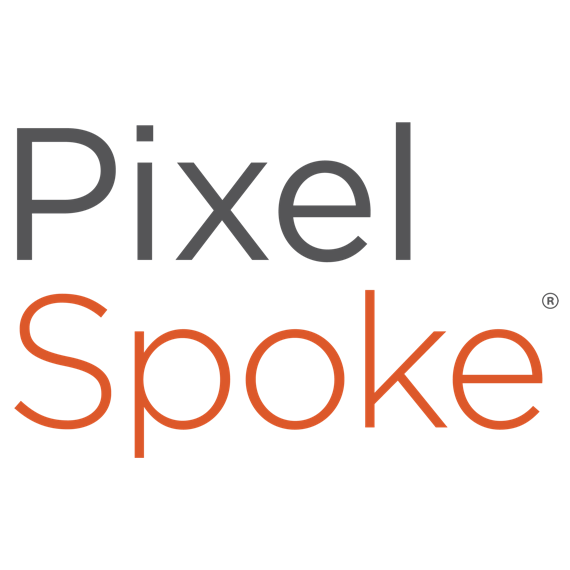Which is more important to the success of your credit union—heroes or habits?
The notion of a hero is certainly tantalizing at first glance. Who doesn’t love the idea of overcoming impossible odds to make something great happen? Proving the naysayers who said “X” couldn’t be done wrong? Rescuing your organization in a time of peril?
And who doesn’t sometimes see themselves in that hero role? After all, heroes save the day—and they get the attention and glory, to boot.
But here’s the thing.
A heroism mindset is likely doing your credit union more harm than good. Heroes are expected to work long hours and always be at the ready—heroism isn’t a 9-5 gig. They have the answers and make good things happen—not once, but time after time, regardless of the circumstances. And the hero can never get tired, need help, or make a mistake, because then they’d cease to be the hero.
A working culture in which success hinges on heroism is also one in which there’s likely to be a fair amount of trauma, dysfunction and burnout.
Instead of a culture that rewards and incentivizes go-it-alone heroism, I’d like to propose a healthier idea that will better set you up for success: A culture that understands and embraces the value of habits.
Grandma was right
Grandmas, who tend to offer great insights on an astonishing variety of things, have a reputation for stressing the value of good habits, whether they are physical, like getting enough sleep, eating your veggies, and taking daily walks, or emotional, like enjoying the little things and practicing gratitude.
Adopting any of these habits doesn’t necessarily entail making any big, bold changes in your life. But the right little things, done day after day, until they’re just part of who you are and what you do, can make a big difference toward achieving a longer-term goal. That’s why Aristotle said “we are what we repeatedly do; excellence, then, is not an act, but a habit.”
Even though habits are small, forming and keeping them can be surprisingly hard. Why?
How to support good habits
Books and articles about the value of good habits and how to form them abound, but James Clear’s Atomic Habits is one of the most actionable. The book stresses that the focus needs to be on fixing the system, not the people.
If your policies, procedures, and culture make it hard to change behavior, then even the changes that your credit union is actively promoting and striving toward aren’t likely to happen.
There are four specific things Clear says your organization must do to create a system that supports habits and not heroics:
- Make it obvious
- Make it attractive
- Make it easy
- Make it satisfying
Here’s how each of these steps works in practice:
- Make it obvious. The book shares how the Japanese rail system staff habitually point out things that seem obvious, such as when trains are leaving the platform or the lights are changing. But those obvious habits have reduced errors by 85% and accidents by 30%.
- Make it attractive. Don’t assume a new habit is desirable to your employees. Either make the habit itself pleasurable or link it to something that is. For instance, most people want to have a sense of belonging and they’re more likely to pick up a habit if it’s the habit of close co-workers, most co-workers, or powerful people they want to emulate.
- Make it easy. People tend to choose the path of least effort, which means it’s critical to eliminate the friction that keeps you from forming good habits and increase the friction associated with bad habits. Here’s one of my favorite examples from the book: Author Victor Hugo knew he wouldn’t be able to hit a writing deadline if he continued to socialize, so he threw away all his clothes so he couldn’t go out. An extreme measure, but it worked for him!
- Make it satisfying—right now. Embed some sort of immediate gratification into the task. Something small, even just a feeling of satisfaction can work, like being able to check an item off a list.
Good habits you already promote
Financial wellness is all about good habits. Take a look at the advice you’re already giving your members. How many have some sort of a “good habit” element? And what tools and resources does your credit union offer to reduce friction for your members?
For instance, you may encourage your members to use:
- Direct deposit to build an emergency fund by setting up an automatic deposit (however small) every pay period into a savings account.
- Bill pay to set up an automatic extra monthly payment to help pay down the principal on higher-interest debt.
- Bill pay to automatically pay credit card balances each month.
- Budgeting tools to help members review their finances on a weekly basis to ensure they’re on track.
- Credit monitoring tools to help members improve, and stay on top of, their credit scores.
These time-tested good habits, made easier by digital tools, can make a big difference for your members’ financial well-being. Let’s borrow a page from your member playbook and think about how we can develop strong internal habits for your credit union, too.
Some good habits to try at your credit union
At PixelSpoke, we consistently see our clients grapple with large-scale projects and initiatives, like digital transformation and marketing automation. We also see them struggle with ongoing tasks that can get easily overwhelming, like data analysis and website maintenance.
How can we apply a habit-focused approach to these daunting projects and tasks?
Data analysis:
Most credit unions know they should be doing a better job tapping into the valuable insights their data provides but are overwhelmed by the sheer quantity of it. Let’s habitualize a data-driven mindset:
- Obvious: Post your key data points in a central location where team members are likely to see it.
- Attractive: Make it a team effort. Celebrate when the data uncovers a win.
- Easy: Each team member is responsible for tracking 1-3 key data points per month.
- Satisfying: Visually demonstrate how close you’re getting to a longer-term annual goal.
Website maintenance:
Websites have a tendency to get a bit unruly. They are continually growing and evolving, but it can be hard to remember which pages contain what information and which pages are linked to from where. It’s also hard to prioritize website updates—they are decidedly unglamorous and rarely noticed by the broader team. While team members are unlikely to remark upon a seamlessly updated website, they will definitely reach out if they stumble upon incorrect or outdated information.
- Obvious: Create a “page inventory” that accounts for all pages on your current site; cross-reference it with Google analytics to identify the most visited pages and mark these in a bright color.
- Attractive: Involve the whole company in the effort. Instead of asking them to merely report errors when they happen to see them, incentivize them to proactively request updates. Give them some degree of shared ownership over sections of the website that overlap with their work.
- Easy: Update five priority pages per month.
- Satisfying: Use the page inventory to track your efforts and make them more visible.
Digital transformation:
“Digital transformation” is one of those phrases that sets some credit union marketers’ teeth on edge. “Transformation” is anything but a small, incremental change — it is messy and sweeping, with myriad moving parts. Chances are, your credit union is already knee-deep in digital transformation but at some points along the way, you might feel stuck, stagnant, or otherwise in need of some renewed energy. It’s time to create some new habits.
- Obvious: Make a list of all the member-facing processes at your credit union that don’t yet have a viable digital option, and put it somewhere that’s easy to see.
- Attractive: Bring in other departments that have a stake in digital transformation to plan, execute, debrief, and celebrate the wins together.
- Easy: Evaluate the PDF forms you still offer on your site and identify one to digitize.
- Satisfying: Check off each process as you digitize it so you can visually mark your progress.
Marketing automation:
Many credit unions have taken the plunge and purchased a marketing automation tool, but then they don’t know how to get started with it. It’s easy to understand why. The prospect of implementing a comprehensive marketing automation strategy is overwhelming, to say the least. Try tackling the strategy with a habit-focused mentality.
- Obvious: Make a running list of all the types of emails you’d like to automate and hang it above your desk.
- Attractive: Announce progress at team meetings so that the work is visible and can be rewarded.
- Easy: Start by automating a single email. Then automate one more.
- Satisfying: Put a gold star next to each email on your list as you launch it.
Habits are as much about culture as process
As credit unions continue to struggle with turnover and employee burnout, emphasizing habits over heroics is more critical than ever. The “hero mentality” that is so pervasive in American workplaces needs to be deconstructed for the benefit of your employees and your members. No initiative or practice at your credit union can ever sustainably hinge on the mighty efforts of a few.
Instead, by focusing on the practice of collective habit formation, we can encourage cross-team collaboration, celebrate more wins, break daunting challenges into bite-size pieces—and still get home in time for dinner.
Co-author: Kerala Taylor








